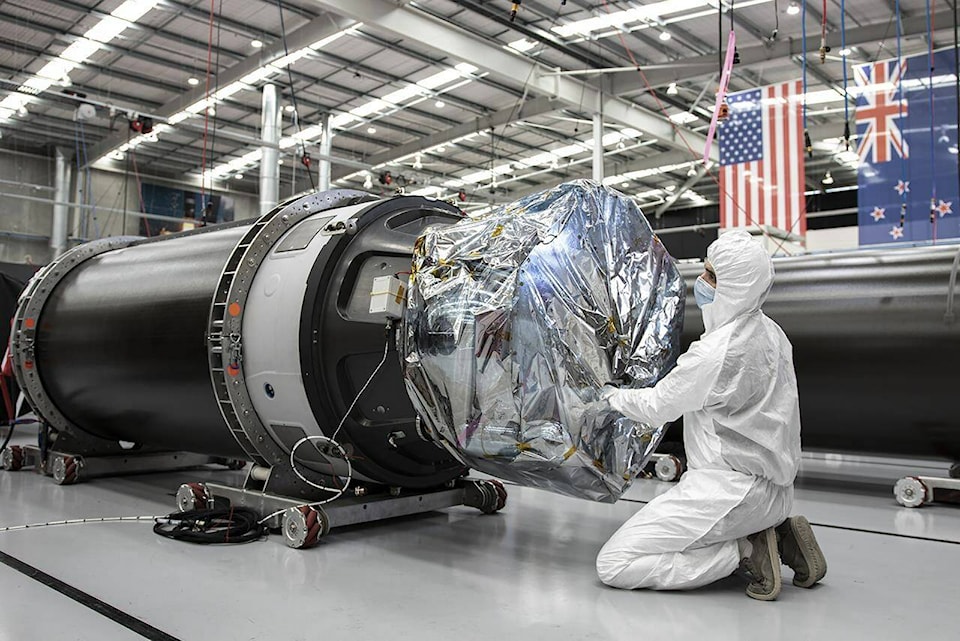NASA wants to experiment with a new orbit around the moon that it hopes to use in the coming years to once again land astronauts on the lunar surface.
So it is sending up a test satellite from New Zealand. The initial stages of the launch went according to plan late Tuesday, with the rocket carrying the satellite reaching space.
If the rest of the mission is successful, the Capstone CubeSat satellite — only about the size of a microwave oven — will be the first to take the new path around the moon and will send back vital information for at least six months.
Technically, the new orbit is called a near-rectilinear halo orbit. It’s a stretched-out egg shape with one end passing close to the moon and the other far from it.
Imagine stretching a rubber band back from your thumb. Your thumb would represent the moon and the rubber band the flight path.
“It will have equilibrium. Poise. Balance,” NASA wrote on its website. “This pathfinding CubeSat will practically be able to kick back and rest in a gravitational sweet spot in space – where the pull of gravity from Earth and the Moon interact to allow for a nearly-stable orbit.”
READ MORE: Mars robot worked on by B.C. scientist powers down as dust settles over solar panels
Eventually, NASA plans to put a space station called Gateway into the orbital path, from which astronauts can descend to the moon’s surface as part of its Artemis program.
For the satellite mission, NASA teamed up with two commercial companies. California-based Rocket Lab launched the rocket carrying the satellite, which in turn is owned and operated by Colorado-based Advanced Space.
The mission came together relatively quickly and cheaply for NASA, with the total mission cost put at $32.7 million.
Getting the 25-kilogram (55-pound) satellite into orbit will take more than four months and be done in three stages.
First, Rocket Lab’s small Electron rocket launched from New Zealand’s Mahia Peninsula. Just nine minutes later, the second stage called Photon separated and went into orbit around Earth. Over the next five days, Photon’s engines are scheduled to fire periodically to raise its orbit further and further from Earth.
Six days after the launch, Photon’s engines will fire a final time, allowing it to escape Earth’s orbit and head for the moon.
Photon will then release the satellite, which has its own small propulsion system but which won’t use much energy as it cruises toward the moon over four months, with a few planned trajectory course corrections along the way.
“Perfect Electron launch!” Rocket Lab founder Peter Beck tweeted Tuesday. “Lunar photon is in Low Earth Orbit.”
Rocket Lab spokesperson Morgan Bailey said it was the most ambitious and complex mission it has undertaken so far and comes after more than two years of work with NASA and Advanced Space. She said it will be the first time Rocket Lab has tested its HyperCurie engine that will be used to power Photon.
“Certainly lots of hard problems to solve along the way, but we’ve ticked them off one by one, and made it to launch day,” Bailey said.
Bailey said one of the advantages of the orbit is that, theoretically, a space station should be able to maintain continuous communication with Earth because it will avoid being eclipsed by the moon.
Nick Perry, The Associated Press
